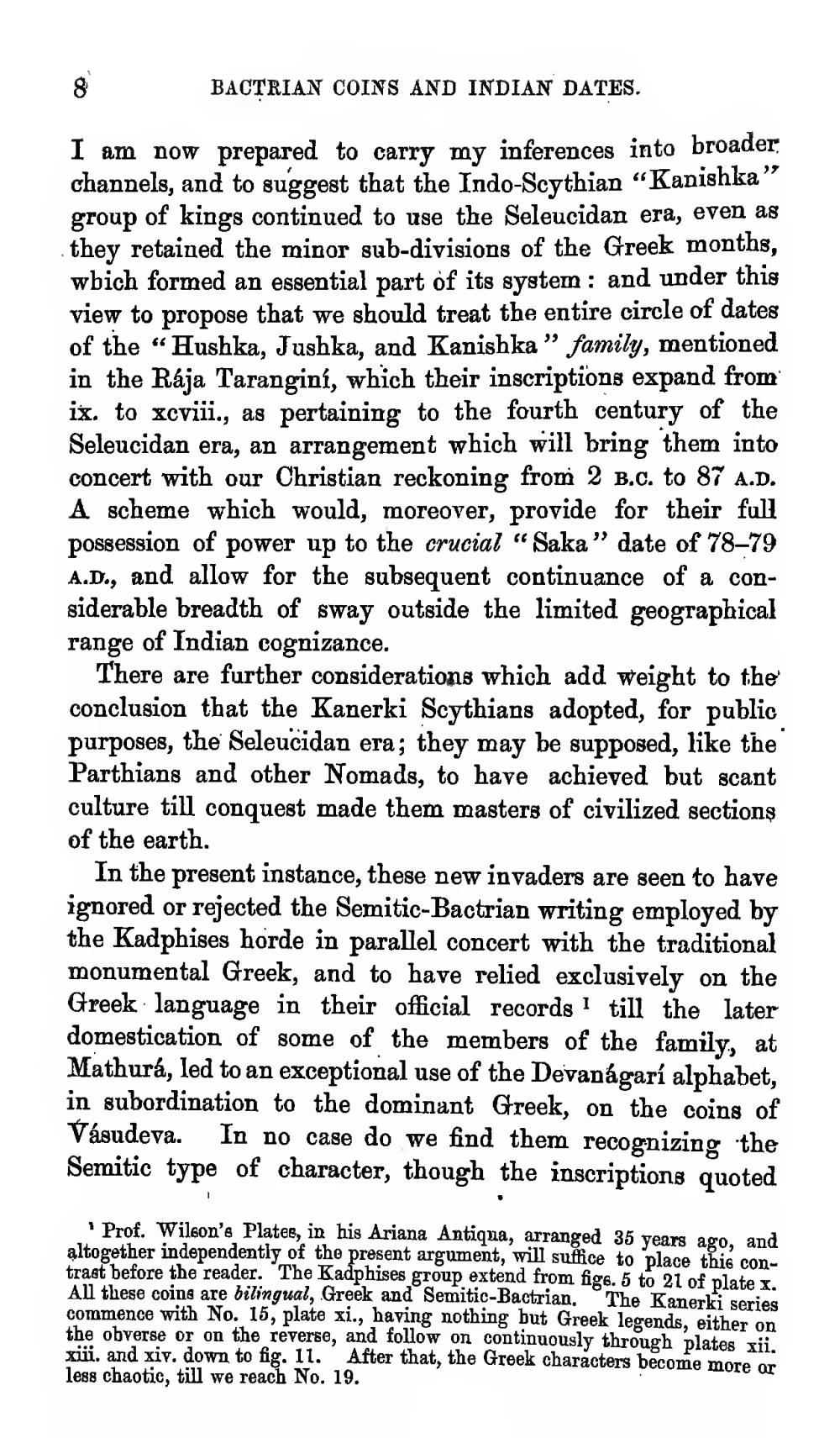________________
BACTRIAN COINS AND INDIAN DATES.
I am now prepared to carry my inferences into broader. channels, and to suggest that the Indo-Scythian "Kanishka” group of kings continued to use the Seleucidan era, even as they retained the minor sub-divisions of the Greek months, wbich formed an essential part of its system: and under this view to propose that we should treat the entire circle of dates of the “Hushka, Jushka, and Kanishka” family, mentioned in the Rája Tarangini, which their inscriptions expand from ix. to xcviii., as pertaining to the fourth century of the Seleucidan era, an arrangement which will bring them into concert with our Christian reckoning from 2 B.c. to 87 A.D. A scheme which would, moreover, provide for their full possession of power up to the crucial “Saka" date of 78–79 A.D., and allow for the subsequent continuance of a considerable breadth of sway outside the limited geographical range of Indian cognizance.
There are further considerations which add weight to the conclusion that the Kanerki Scythians adopted, for public purposes, the Seleucidan era; they may be supposed, like the Parthians and other Nomads, to have achieved but scant culture till conquest made them masters of civilized sections of the earth.
In the present instance, these new invaders are seen to have ignored or rejected the Semitic-Bactrian writing employed by the Kadphises horde in parallel concert with the traditional monumental Greek, and to have relied exclusively on the Greek language in their official records 1 till the later domestication of some of the members of the family, at Mathura, led to an exceptional use of the Devanagari alphabet, in subordination to the dominant Greek, on the coins of Vásudeva. In no case do we find them recognizing the Semitic type of character, though the inscriptions quoted
1 Prof. Wilson's Plates, in his Ariana Antiqua, arranged 35 years ago, and altogether independently of the present argument, will suffice to place this contrast before the reader. The Kadphises group extend from fige. 5 to 21 of plate x. All these coins are bilingual, Greek and Semitic-Bactrian, The Kanerki series commence with No. 15, plate xi., having nothing but Greek legends, either on the obverse or on the reverse, and follow on continuously through plates xii. xiii. and xiv. down to fig, 11. After that, the Greek characters become more or less chaotic, till we reach No. 19.




